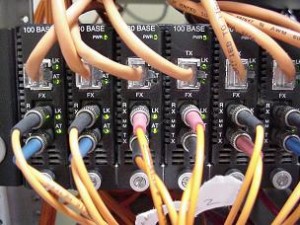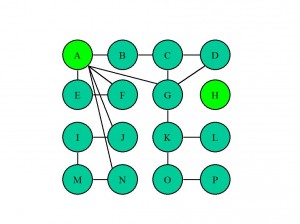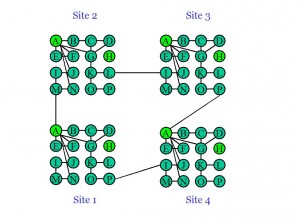
No budget, no special training, and yet you are expected to do more with less. How can you go about fixing what’s wrong with your IT team during tight economic times? It turns out that there is a simple way for you to identify where you are having issues and how you can fix them. All you need to do is to learn a about a new management tool called social-network analysis…
It’s Not Facebook
These day’s we’re reading so much about social networks that when we hear the phrase, we automatically think of web sites like Facebook, LinkedIn, or MySpace. Well, we’re not talking about those, but there are similarities.
Instead, what social-network mapping is all about is finding out who your team talks with in order to solve problems and get information. This is the type of information that everyone always knows, but never spends much time thinking about — it’s basically invisible.
Once you’ve collected this information from your team, you will then be able to create a social-network map that shows the communication gaps, related information bottlenecks, and team members that are not being fully utilized.
The immediate payoff for you as an IT Leader is that you’ll be able to improve collaboration within your team as well as perhaps uncovering some star performers that you simply didn’t know about.
How About An Example?
This kind of management tool just begs for an example, so let’s take a look at one. Let us pretend that you are an IT manager who is in charge of a team of 16 workers as shown in the following figure:

You create a questionnaire for your team that has only one question: “Whom do you go to in order to get answers to your technical questions?”. When you get the survey forms back, you lock the door to your office and get busy creating a social-network analysis map. Let’s say that you come up with something that looks like this:

Now you have to interpret what you’ve discovered. Clearly worker A is one of your star problem solvers — did you know that? It also looks like you have a hidden problem with worker H, they don’t seem to be seeking help to solve problems and nobody is asking them for help. Additionally, with only a couple of exceptions, your department seems to be divided into two groups that really aren’t talking with each other. Once again, did you know this?
For IT Leaders who are managing a team that is spread over multiple sites, this kind of social analysis can be even more valuable. If we sent our questionnaire out to all four sites that our team is located at, we might get the following results back.

What this is showing us is that although there appears to be information flowing within each of the four sites, there is very little information that flows between sites. A little more digging might reveal that the only people on your team who are talking to each other are the managers. If so, then you’ve got a problem that needs to be addressed.
What All Of This Means For You
In order to get the most value out of doing a social-network analysis, you are going to have to carefully pick the questions that you ask your team. One great question to include is to ask how interacting with a given team member affects the responder’s energy level. This can be a good way to uncover the energy vampires on your team.
The result of making the effort to map the social structure of your IT team should product tangible real-world payoffs. The most valuable of these is that once you know who has the most valuable information, then you can work to make sure that everyone has easier access to that information. This should result in a decrease in the number of steps that are required to solve issues.
Ultimately understanding the flow of communications within your team and then taking steps to improve and facilitate it will boost your team’s ability to innovate. Now that’s something that we all would like to have more of!
What Do You Think The Most Important Question To Ask In A Social-Network Analysis questionnaire would be?
![]() Click here to get automatic updates when The Accidental IT Leader Blog is updated.
Click here to get automatic updates when The Accidental IT Leader Blog is updated.
What We’ll Be Talking About Next Time
There is probably no way that you’re going to be getting more funding or headcount in the immediate future. Yet at the same time your senior management keeps talking about the need for the IT department to start showing some innovation. Sounds like you’ve gotten yourself into yet another bind. How about if we take a look at how you can exceed your expectations using what you already have…
